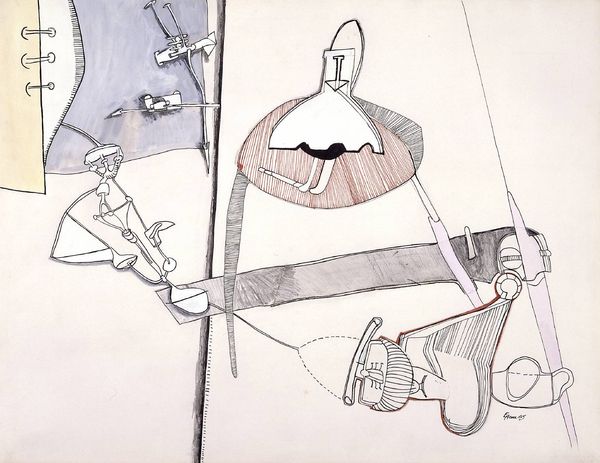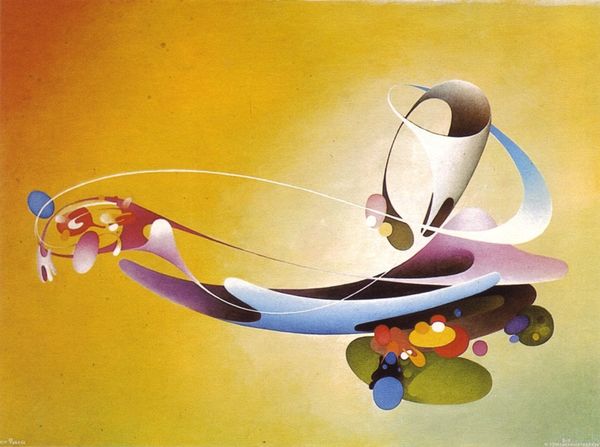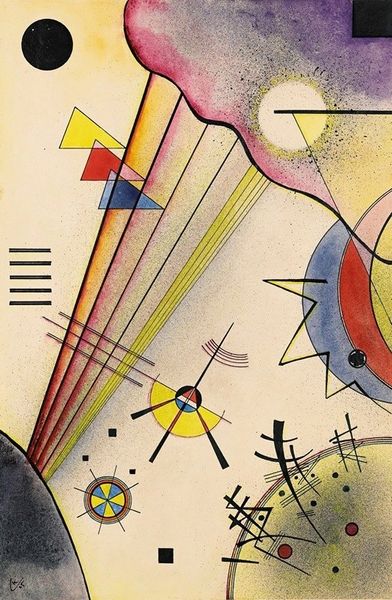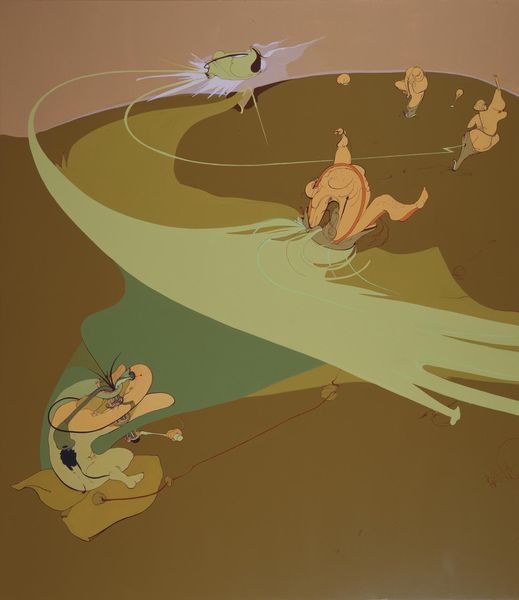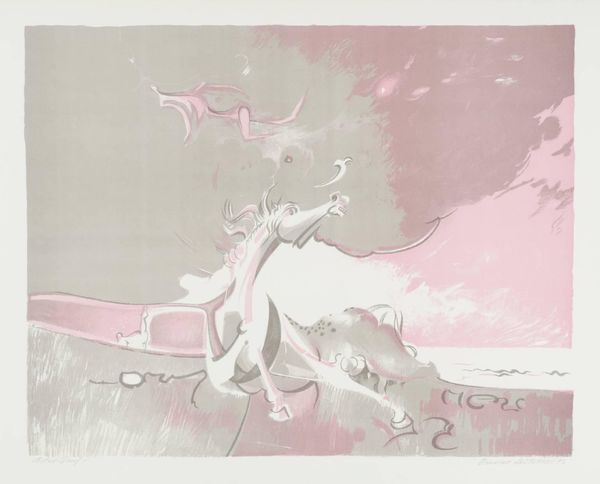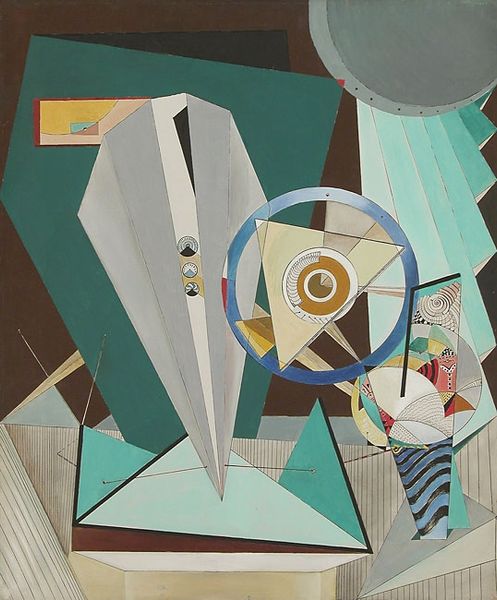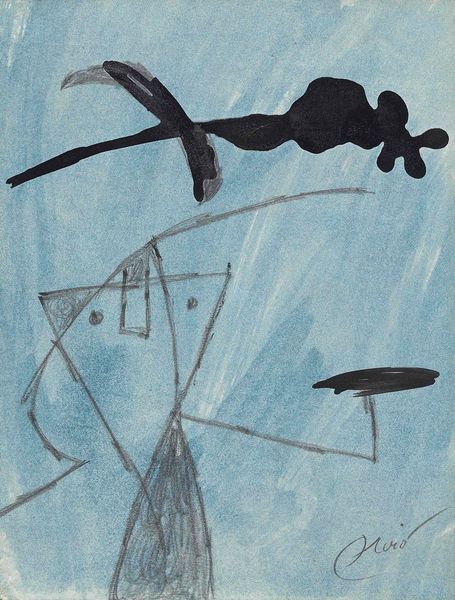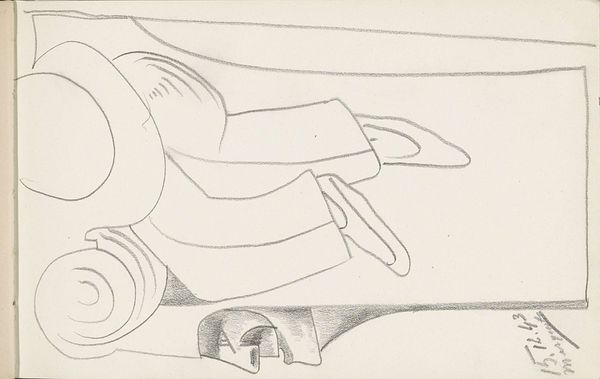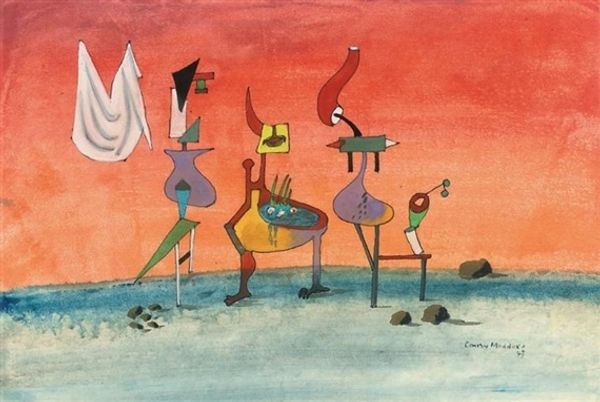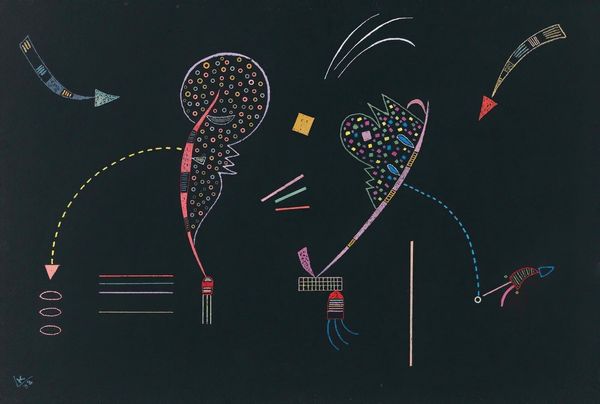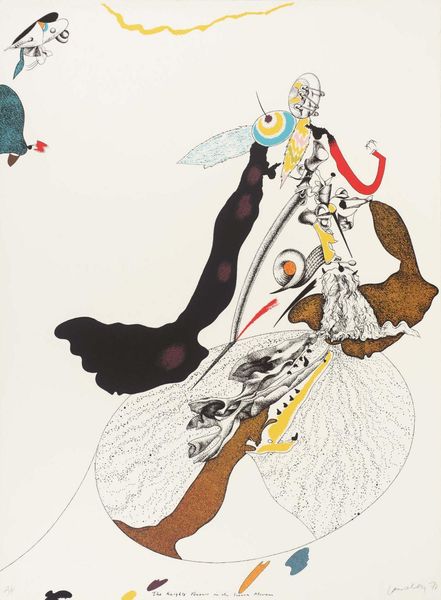
Dimensions: support: 489 x 645 mm
Copyright: © ADAGP, Paris and DACS, London 2014 | CC-BY-NC-ND 4.0 DEED, Photo: Tate
Editor: This is Jean Crotti's "Portrait of Edison," housed at the Tate. It's an unusual image, almost a mechanical rendering. How do you interpret the meaning behind this abstract portrait? Curator: The placement of Edison's name, alongside a trumpet, emphasizes the commodification of sound and invention in the early 20th century. Consider the societal impact of Edison's inventions, like the phonograph, and how they reshaped public life. Do you see any elements that suggest mass culture? Editor: Perhaps the industrial shapes imply mass production? I didn't initially make that connection. Curator: Exactly! Crotti prompts us to question how technology and art intertwine within the larger cultural landscape. Editor: I see it now; the piece is more critical of technological advancement than I first thought.
Comments
tate 6 months ago
⋮
http://www.tate.org.uk/art/artworks/crotti-portrait-of-edison-t02315
Join the conversation
Join millions of artists and users on Artera today and experience the ultimate creative platform.
tate 6 months ago
⋮
A strand of Dada production was associated with an ironic and subversive view of science. Jean Crotti and Suzanne Duchamp infused much of their work with this attitude, which brought them close to Marcel Duchamp and Francis Picabia. Crotti’s Portrait of Edison may both celebrate and subvert the reputation of Thomas Edison, the great inventor associated with electric lights, telephones and recording. The phonograph especially seems to be deconstructed in the lower part of the composition. Gallery label, July 2011
